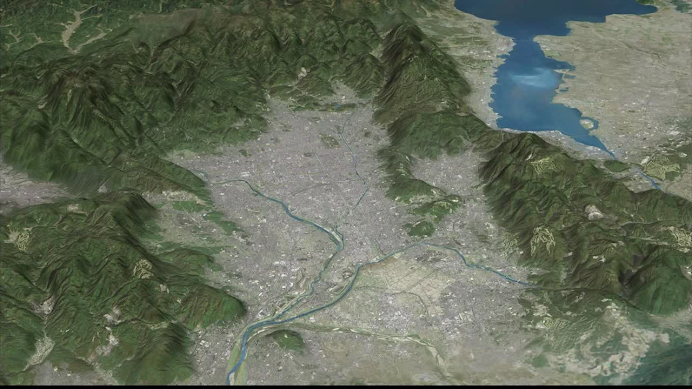KIRISHITAN KYOTO
John Dougill writes…
In the heart of Kyoto there once stood a Southern Barbarian Temple (Nanban-ji). It was located not far from Rokkaku-do, the city’s belly button. The three-storey structure was built in 1576 and was an exotic addition to a city in the midst of revitalisation. For a while it was the height of fashion for the city’s leading figures to go visit the ‘temple’.
How did it come about? The story begins in early 1551 with the first ever European to set foot in Kyoto the intrepid missionary Francis Xavier. To his dismay he found the city in ruins following a long period of civil strife and left after just ten days. But the Jesuits were determined to make a base in the capital, and eight years later came Father Vilela. Through dogged perseverance he built up a following.
In 1576, with the support of volunteers, the Jesuits were able to turn their humble altar into a proper church. Portuguese fashion was all the rage at the time, and some of the aristocracy had taken to wearing pantaloons and crosses. As a result the new church created a buzz of excitement and among the visitors was the country’s unifier,Nobunaga. Two of his sons took an interest in the religion, and one was later baptised.
It all came to a sorry end in 1587. In an angry outburst against the Jesuits’ military tiesHideyoshi issued an anti-Christian edict, and in the aftermath the church was demolished. Amazingly the Portuguese-made bell was somehow preserved and can still be seen atShunko-in, a subtemple of the Zen monastery of Myoshin-ji. It bears the date 1577 and has an inscription in Latin.
Not long afterwards a second Nanban-dera arose in the city, following the arrival of the Franciscans in 1593. The newcomers had come from Manila and established a small monastery with hospitals and a church. Though the official name was Los Angeles, locals nicknamed it after the first church.
It lasted just four years, until Hideyoshi turned against the Franciscans as a fifth column for Spanish colonialism. A small museum now stands on the site.
A third Kyoto church was established on Motoseiganji from 1604-12, when the Tokugawaregime clamped down on the foreign faith.
It heralded an age of persecution, marked in Kyoto by the Great Martyrdom of 1619 when 52 people were burnt on the banks of the Kamogawa. Amongst the victims was Hashimoto Tecla, the only known pregnant martyr in Catholic history, who was burnt along with five of her six children. By 1639, with the age of isolation, Kyoto’s flirtation with Christianity was over. Not until 1873 was the religion allowed again.
____________________________________________________________________________________
(The first and third Kirishitan churches are marked by noticeboards. The site of the second church is now theFuransisuko no Ie, which displays items related to Kyoto’s Kirishitan past. It is just to the west of Shijo Omiya, at Satakechou 388, Iwagamidori sagaru, Shimogyo-ku, Kyoto 600-8391. Tel: 075-822-2397.)
John Dougill is the author of Kyoto: A Cultural History and is currently researching Japan’s Hidden Christians for a forthcoming book.











